Jinsheng Ren
Learning Invariable Semantical Representation from Language for Extensible Policy Generalization
Jan 26, 2022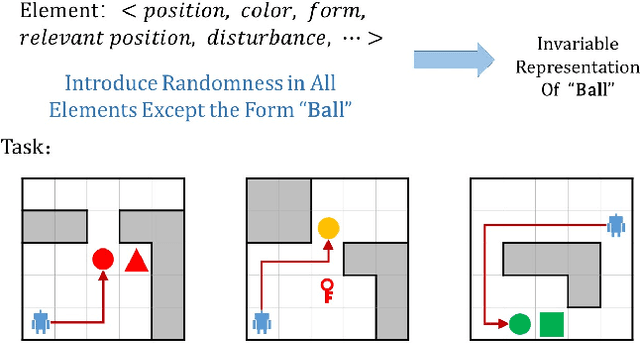
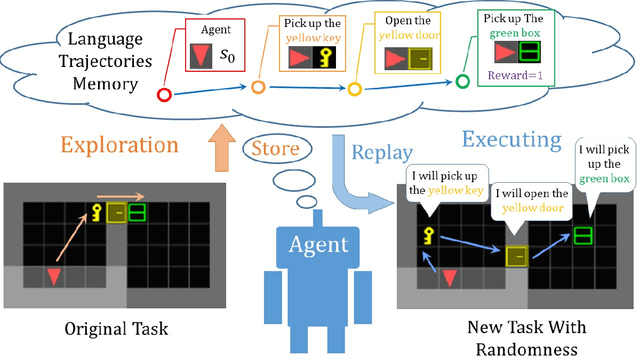
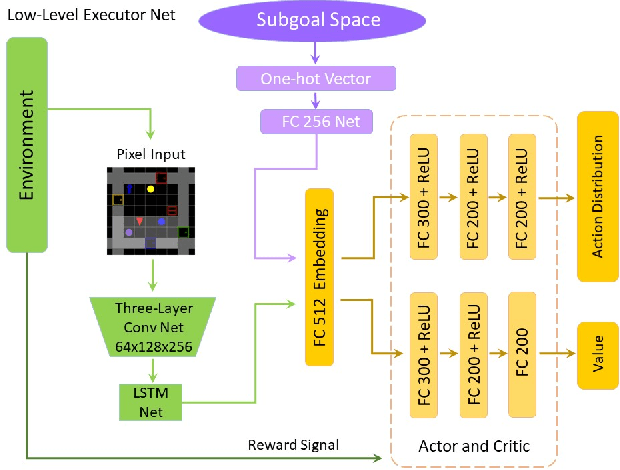
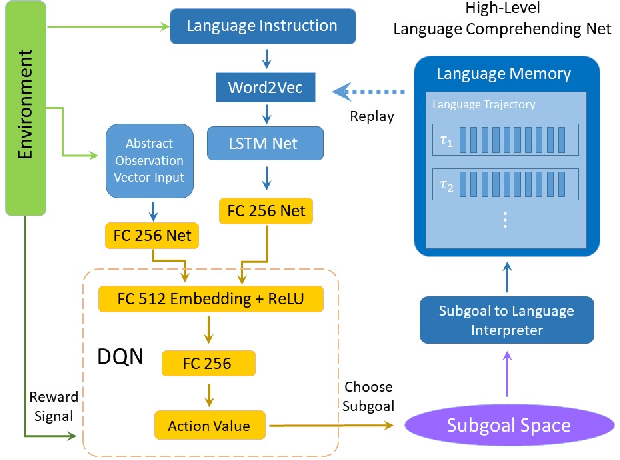
Abstract:Recently, incorporating natural language instructions into reinforcement learning (RL) to learn semantically meaningful representations and foster generalization has caught many concerns. However, the semantical information in language instructions is usually entangled with task-specific state information, which hampers the learning of semantically invariant and reusable representations. In this paper, we propose a method to learn such representations called element randomization, which extracts task-relevant but environment-agnostic semantics from instructions using a set of environments with randomized elements, e.g., topological structures or textures, yet the same language instruction. We theoretically prove the feasibility of learning semantically invariant representations through randomization. In practice, we accordingly develop a hierarchy of policies, where a high-level policy is designed to modulate the behavior of a goal-conditioned low-level policy by proposing subgoals as semantically invariant representations. Experiments on challenging long-horizon tasks show that (1) our low-level policy reliably generalizes to tasks against environment changes; (2) our hierarchical policy exhibits extensible generalization in unseen new tasks that can be decomposed into several solvable sub-tasks; and (3) by storing and replaying language trajectories as succinct policy representations, the agent can complete tasks in a one-shot fashion, i.e., once one successful trajectory has been attained.
Abstraction Learning
Sep 11, 2018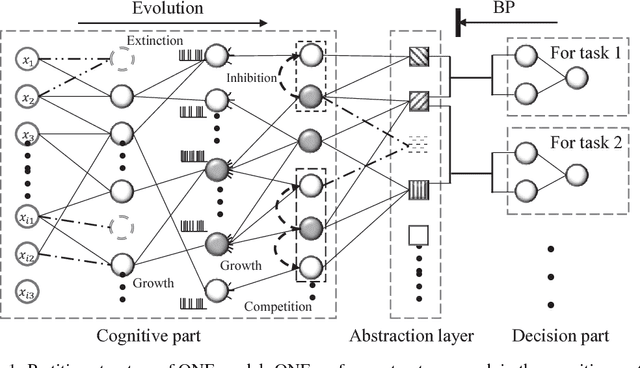



Abstract:There has been a gap between artificial intelligence and human intelligence. In this paper, we identify three key elements forming human intelligence, and suggest that abstraction learning combines these elements and is thus a way to bridge the gap. Prior researches in artificial intelligence either specify abstraction by human experts, or take abstraction as a qualitative explanation for the model. This paper aims to learn abstraction directly. We tackle three main challenges: representation, objective function, and learning algorithm. Specifically, we propose a partition structure that contains pre-allocated abstraction neurons; we formulate abstraction learning as a constrained optimization problem, which integrates abstraction properties; we develop a network evolution algorithm to solve this problem. This complete framework is named ONE (Optimization via Network Evolution). In our experiments on MNIST, ONE shows elementary human-like intelligence, including low energy consumption, knowledge sharing, and lifelong learning.
 Add to Chrome
Add to Chrome Add to Firefox
Add to Firefox Add to Edge
Add to Edge